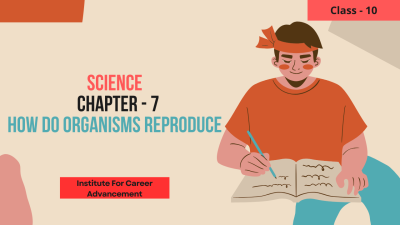How Do Organisms Reproduce - Class 10

₹299
Here's a short description of reproduction: The Big Picture: It's all about creating new individuals to keep the species going. There are two main ways organisms reproduce: Asexual Reproduction: One parent is involved, and the offspring are genetically identical to the parent (think of taking cuttings from a plant). Sexual Reproduction: Two parents are involved, and the offspring have a mix of genes from both parents (like you inheriting traits from your mom and dad). Asexual Methods: Some organisms reproduce by fission (splitting in two), budding (growing a new individual from the parent), or spore formation (tiny reproductive units that grow into new organisms). Sexual Methods: Sexual reproduction involves the fusion of sex cells (egg and sperm) to form a zygote, which develops into a new organism. এখানে প্রজননের একটি সংক্ষিপ্ত বিবরণ দেওয়া হলঃ বড় ছবিঃ প্রজাতিটি চালিয়ে যাওয়ার জন্য এটি নতুন ব্যক্তি তৈরি করার বিষয়ে। জীবের পুনরুত্পাদন করার দুটি প্রধান উপায় রয়েছেঃ অযৌন প্রজনন (Asexual reproduction): পিতামাতার মধ্যে একজন জড়িত, এবং সন্তানরা পিতামাতার সাথে জিনগতভাবে অভিন্ন। (think of taking cuttings from a plant). যৌন প্রজননঃ দুই পিতামাতা জড়িত, এবং সন্তানদের উভয় পিতামাতার কাছ থেকে জিনের মিশ্রণ রয়েছে। (like you inheriting traits from your mom and dad). অযৌন পদ্ধতিঃ কিছু জীব বিভাজনের (দুই ভাগে বিভক্ত) মাধ্যমে প্রজনন করে। (tiny reproductive units that grow into new organisms). যৌন পদ্ধতিঃ যৌন প্রজননে যৌন কোষের (ডিম এবং শুক্রাণু) সংমিশ্রণে একটি জাইগোট তৈরি হয়, যা একটি নতুন জীবের মধ্যে বিকশিত হয়।
Learn more
 0
0 